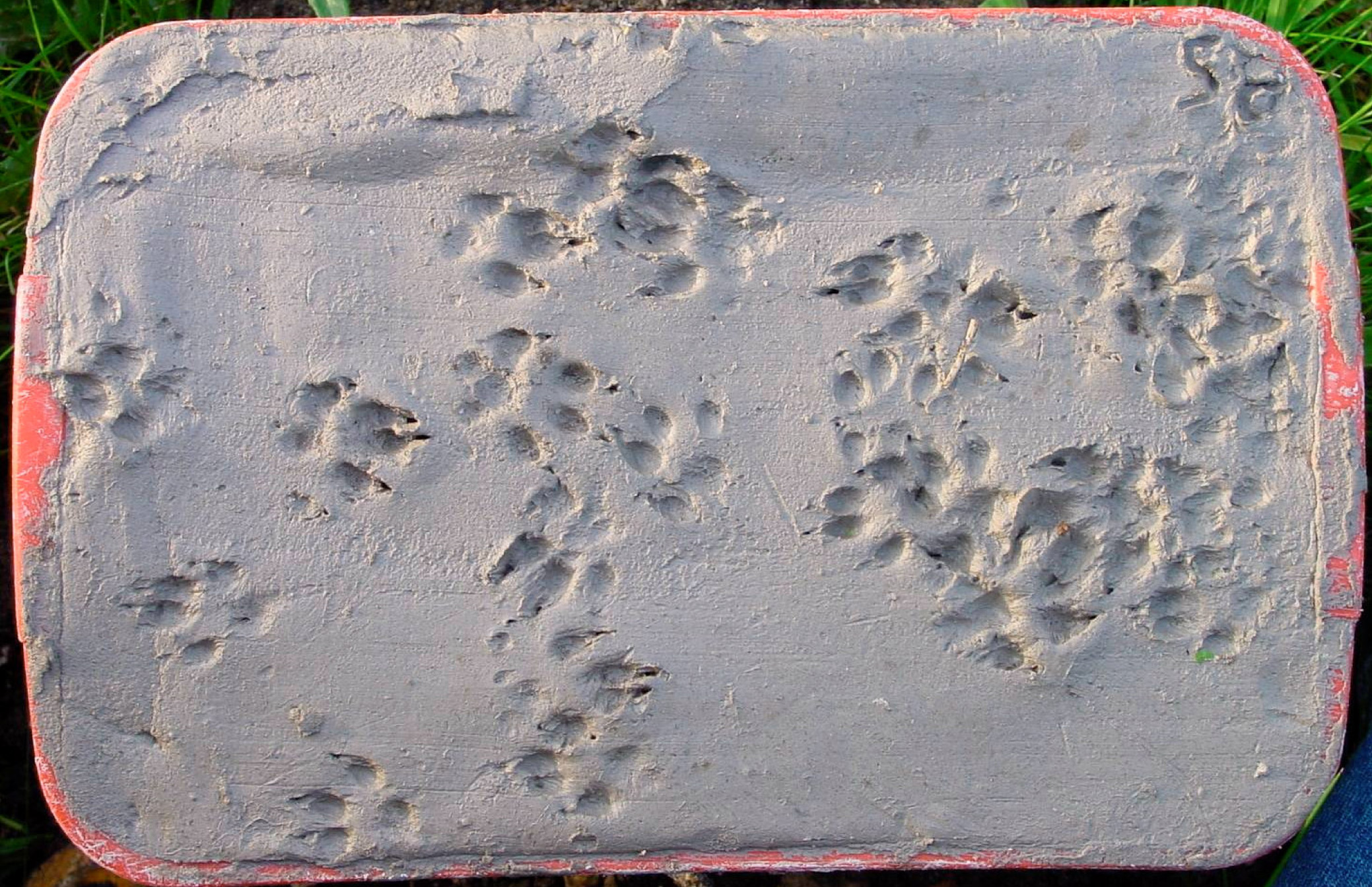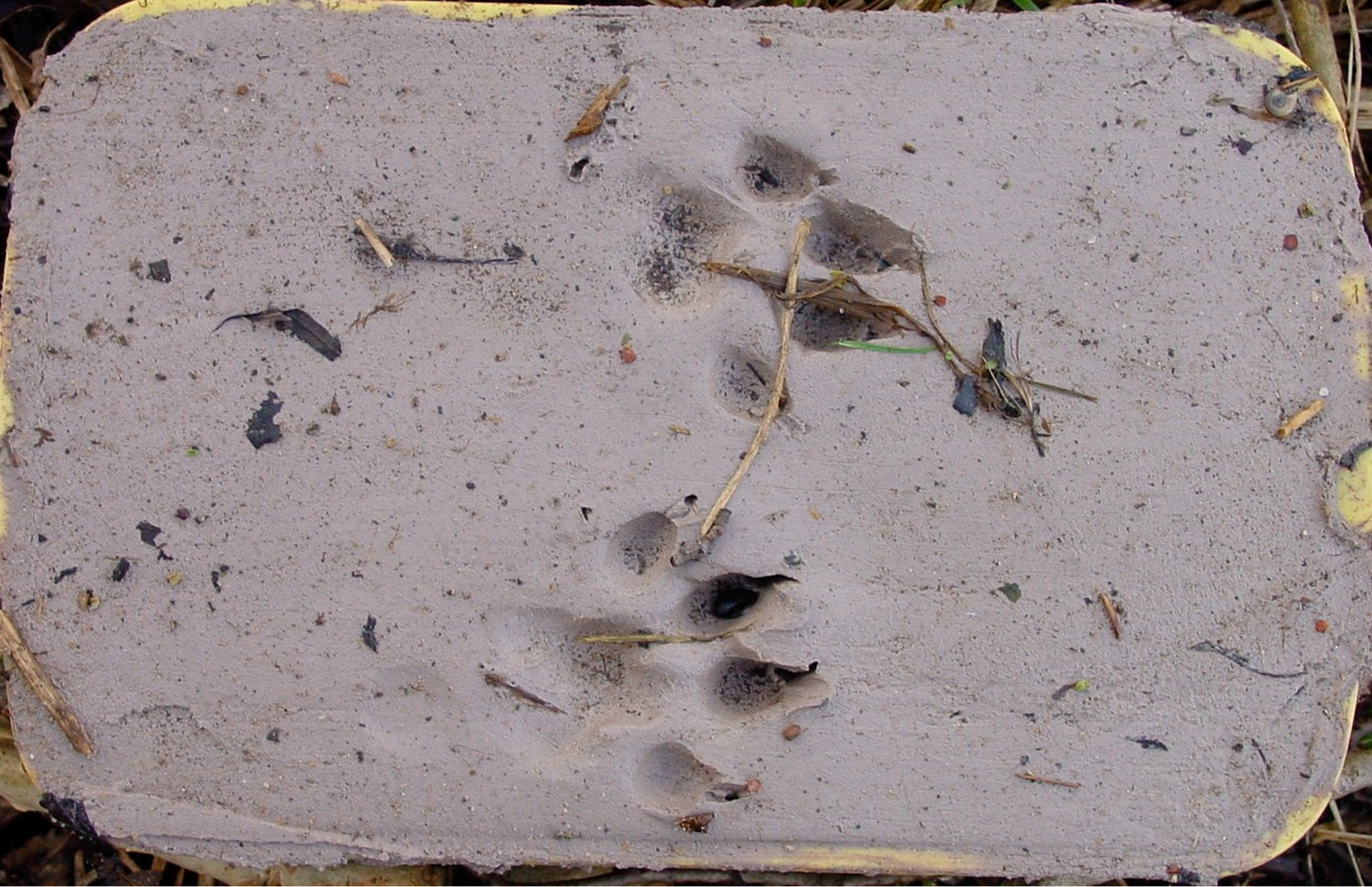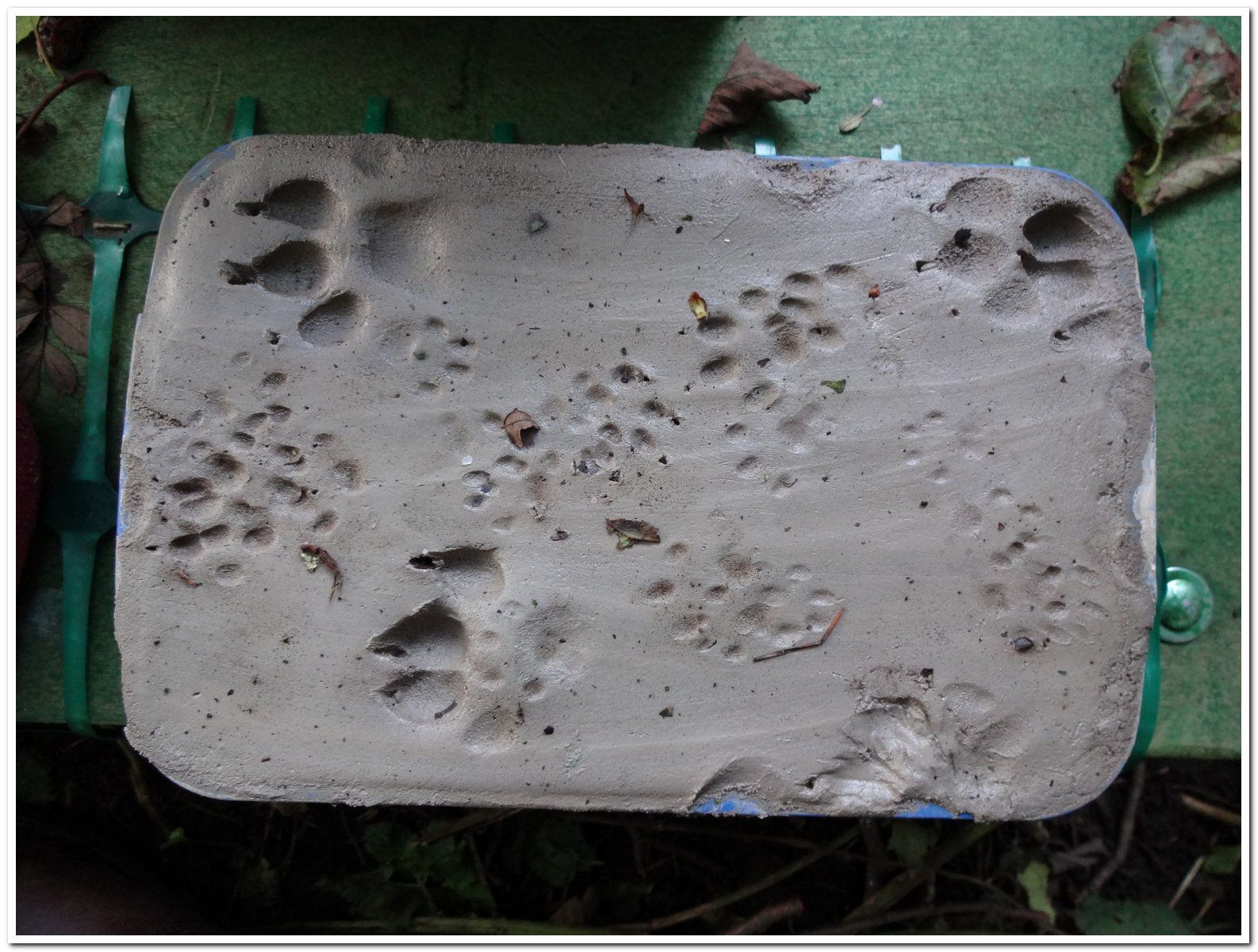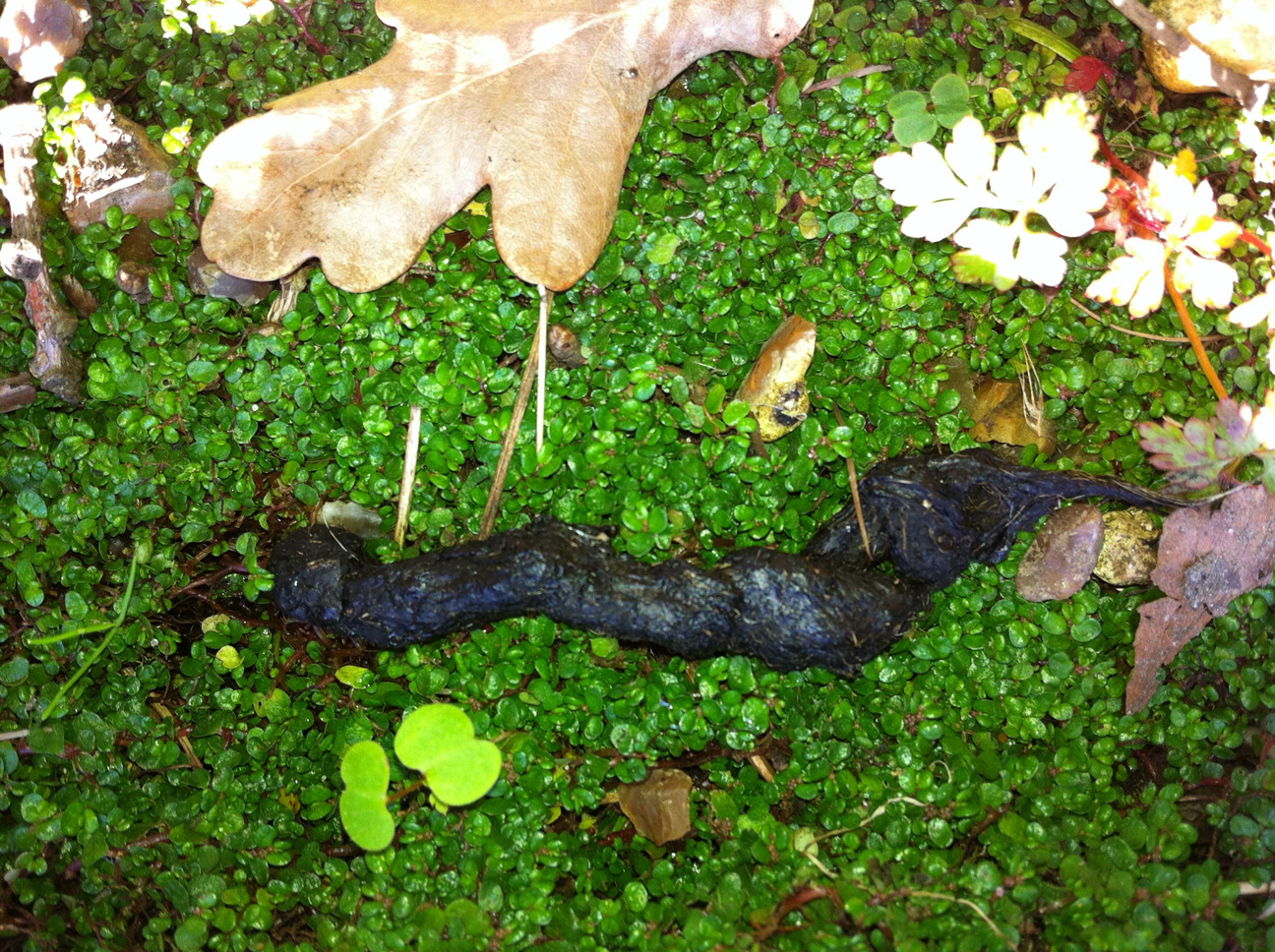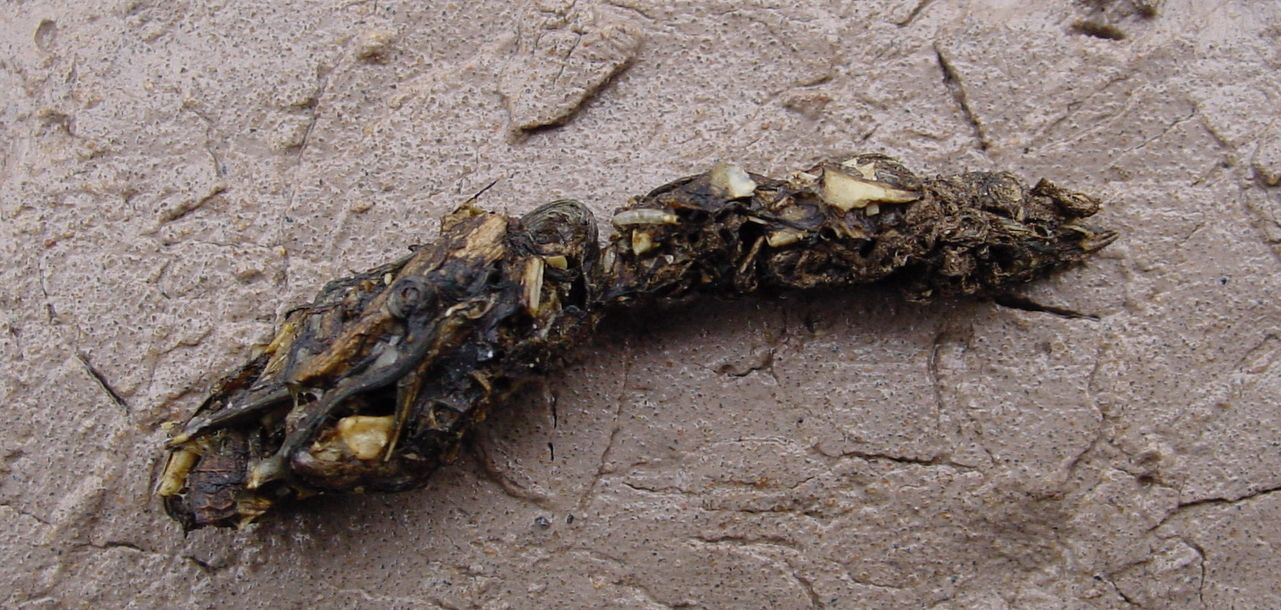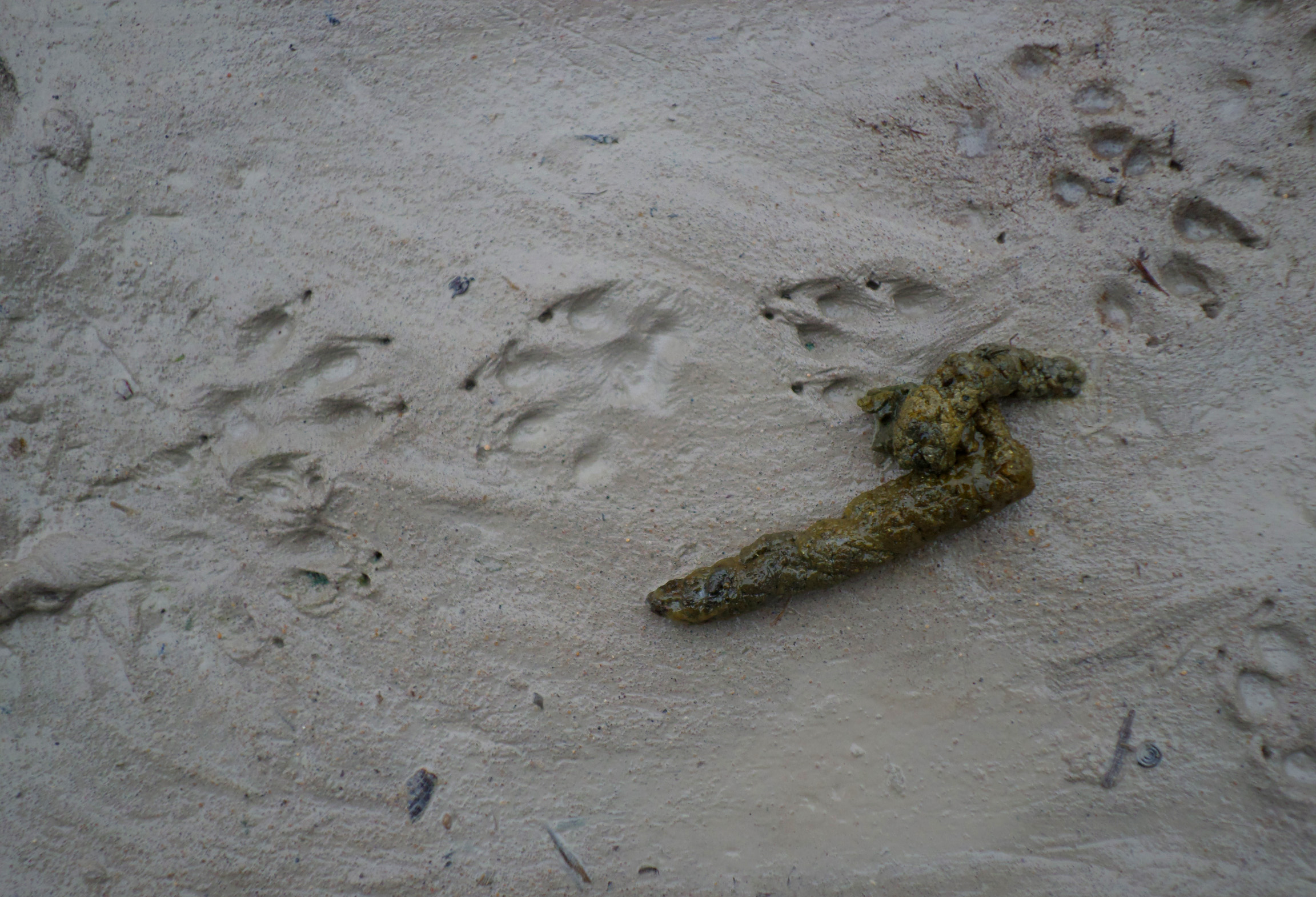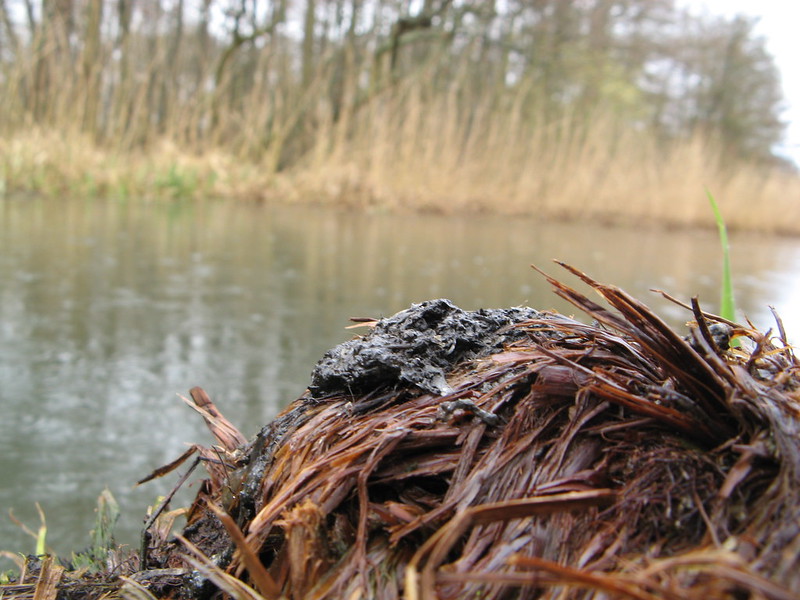Field Signs
American mink are most active at night, dusk and dawn but are still often seen out during the day. They spend large parts of the day laying up in a den, which can be anything from an old rabbit burrow, a hollow tree or under something man-made such as a shed, old vehicle or even under old corrugated iron. The den may contain the remains of prey items, which may also be stashed in other sites within their territory.
Tracks
Even if you don’t see a mink you can often detect their presence by the field signs they leave. The most obvious are their footprints, which are about the size of a 50p coin, although obviously varying according to the sex and maturity of the animal. Although they have 5 toes, usually only 4 are visible in a print, arranged in a star shape around the pad. Polecat and ferret tracks are almost indistinguishable from those of American mink but a waterside location will point to American mink.
Double click image to view full screen
Scats
Their faeces or scats are, cylindrical with tapered ends about 5-8 cm long by 1 cm in diameter. They usually have a fetid smell and contain fur. Otter spraint is usually looser, contains mostly fish bones and has a more pleasant, sweeter smell often said to be like Jasmine Tea.
Double click image to view full screen

